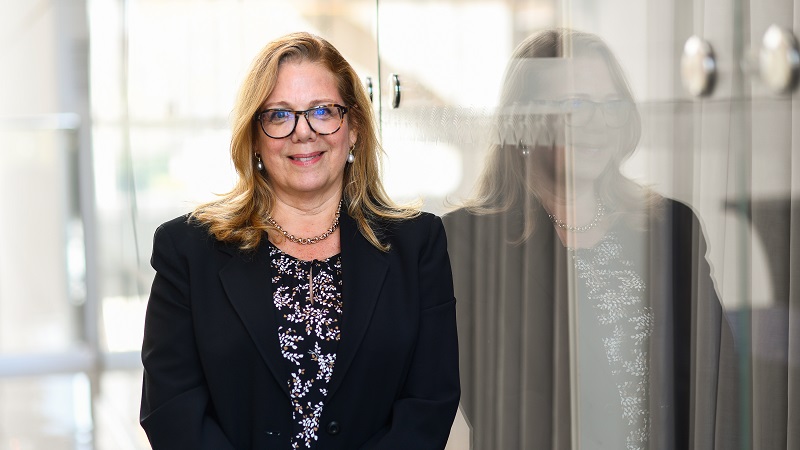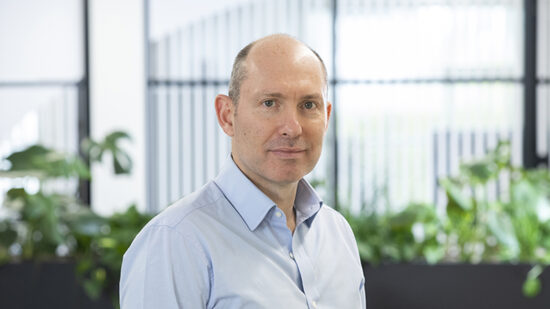Cathy Hepworth was always likely to acquire a fascination for developing countries. A summer in Peru during high school and a semester in Brazil while an undergraduate of economics at the School of Foreign Service in Georgetown, cemented her interest.
“As an undergrad, I always knew I wanted to do something in development economics in particular,” she says. “It was inevitable I would end up in emerging markets.”
After stints as an analyst at Merrill Lynch and Golembe Associates, Hepworth joined PGIM Fixed Income in 1989 as a portfolio manager focused on Latin America. She now oversees $37bn (£29bn) as co-head of PGIM Fixed Income’s emerging market debt business and a team of 31 investment professionals spread across its Newark, London and Singapore offices.
She co-founded the firm’s emerging market debt effort in 1995 with David Bessey shortly before the first product, a hard currency fund, was launched in 1996. Bessey is set to retire next year, leaving Hepworth at the helm.
Hepworth has inevitably had to broaden her focus from Latin America to the wider emerging market universe. Along with Bessey, she oversees portfolio management, which is a four-step process: assessing the global backdrop; generating an individual country view; security selection; and, finally, risk management.
A key part of her remit is to take an overarching view of the macro environment and determine the strategies’ risk budget. This involves liaising with the firm’s economists and other fixed-income desks and deriving the strategies’ risk-on/risk-off position.
“Every day, I look at the different types of risk we have across all of our EM strategies. I make sure they are consistent with what our view is more broadly from both the topdown and bottom-up perspective, and set the risk budget.”
The team regards the current market as risk-on but this view is tempered by the simmering US-China trade war.
“The uncertainty affects sentiment and the financial markets. Were it not for that, we would probably have more risk-on,” she says. “If the Fed continues with this tone, and delivers the cuts that are priced into the market, there is a lot of potential for spreads to compress.”
Hepworth accepts that growth is slowing in most economies apart from the US, but she does not believe a recession is around the corner. This is despite major developed market central banks being incredibly accommodative and the proliferation of negatively yielding debt, which has fuelled the investor reach for yield.
“With the yield curve flatter or inverted and labour markets tight, doesn’t that mean a recession is around the corner? Apparently not and I don’t really know why, except to say there are things happening in the economy that aren’t being properly measured.”
She adds: “I think the way we measure growth and other macro and micro indicators is flawed. The fact it’s very difficult for developed market central banks to meet their inflation targets is telling; there’s obviously a measurement challenge going on.”

Hepworth also believes there is a tremendous amount of incentive from a policy perspective to avoid a global recession, particularly from China.
“I think China has the wherewithal as well as the willingness to make sure it is using the appropriate stimulus measures. Maybe at the end of the day that includes the currency in a much more pronounced way.”
The US also has an imperative to avoid recession with the election cycle fast-approaching in 2020.
“Trump makes no bones about making it easier to give back some of the rate hikes from last year,” she says. “I think there’s a policy imperative globally to prevent a recession. In a world where there’s not a major global crisis around the corner, it’s natural to reach for yield, and emerging markets still deliver that in hard currency assets where there is potential for spread compression.”
Core strengths
The team meets each Monday to discuss the portfolios. Hepworth believes the “essence” of the process is the bottom-up bond selection, which has input from the regional portfolio managers, economists and analysts.
She says the most important meeting that takes place is the relative value meeting every Thursday morning, where the regional PMs and economists present to the rest of the team their high-conviction overweight and underweight positions.
Bond selection is generally a team-led process but, on a daily basis, portfolio managers have discretion to decide if they want to make changes, switching between country allocations, for example.
In total, the EM debt business has five funds: Emerging Markets Corporate Debt; Hard Currency; Hard/Local Blend; Local Currency; and the recently launched Emerging Market Total Return Bond Fund. The latter is a sub-fund of the firm’s Irish Ucits outfit PGIM Funds and was unveiled to UK investors in March. According to Hepworth, there was the need for a “go-anywhere” option in the stable.
“We thought there was demand for a fund where you don’t have to own something just because it’s in the benchmark. That’s why the benchmark is Libor, so you don’t necessarily have the beta of an EM benchmark.”
The fund seeks an annualised gross return of 4.5% above three-month Libor and is overweight Argentina, Ukraine and Brazil quasi sovereigns. It has allocations in hard currency and in Turkey, sub-Saharan African countries and Ecuador. The fund has a focus on the five to seven-year maturity spectrum in hard and local currency.
“We don’t want a lot of duration in the portfolio because there’s no benchmark,” says Hepworth. “Because of what’s happened with treasuries over the long run, you don’t necessarily always want to have duration in an emerging market portfolio.”
The fund also has local currency exposure to China and Mexico, given the team’s view that the latter’s central bank is likely to begin a rate-cutting cycle. It also takes positions in currencies that tend to be less correlated to global trade. One example is the Russian ruble, which Hepworth says is doing well because the macro situation from a current account perspective is solid.
The duration of the portfolio is a little under five years while the yield is over 6%.
Risk control
If a risk threshold is exceeded the initial step is dialogue with the risk group, before the matter is escalated to the CIO and/or the head of fixed income. That rarely happens, however. “We typically reach an agreement that we have to reduce some of the risk in an individual country,” says Hepworth.
As co-heads of the EM debt team, the ultimate say on all matters is down to Hepworth and Bessey.
“What would typically be considered a risk committee takes place throughout the week during all our different meetings,” Hepworth adds.
But the team does seek to add risk when others do not. Examples include adding to Ukranian debt in December last year as it sold off ahead of the March presidential election. It also increased its position in Russia in 2014 when the US imposed sanctions on Russian-occupied Crimea.
“One of the biggest overweights we have is in Argentina hard currency. It hurt us last year but we have conviction that regardless of who wins the election in October, the market is pricing in a default in Argentina that we don’t think is going to happen.”
With so many markets on different time zones and several strategies under PGIM Fixed Income’s EM debt umbrella to keep tabs on, how does Hepworth find the time?
“Every time you turn on the TV, any bit of news you see pertains to what’s in our portfolios, because what’s happening in the developed markets impacts risk sentiment and risk appetite. That will have a feedback loop to how we should be positioned and thinking about emerging markets.”
In addition to that, Hepworth admits it’s “a passion” and that she “couldn’t imagine doing anything else”.







